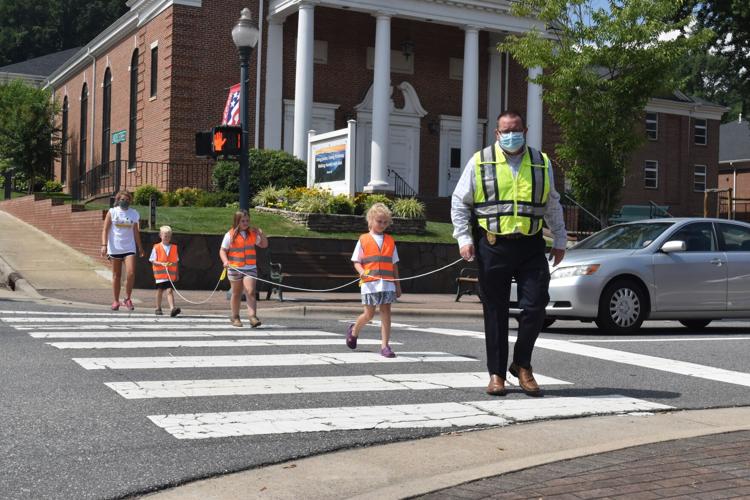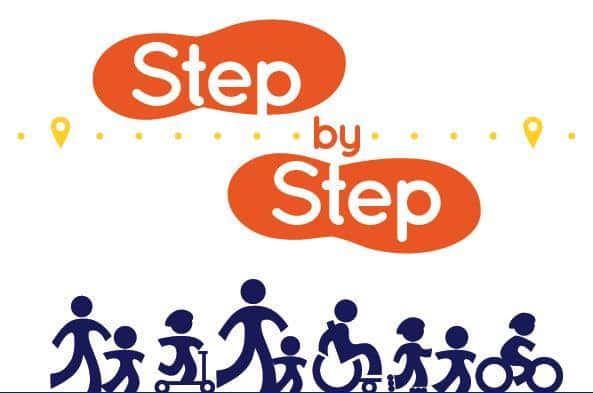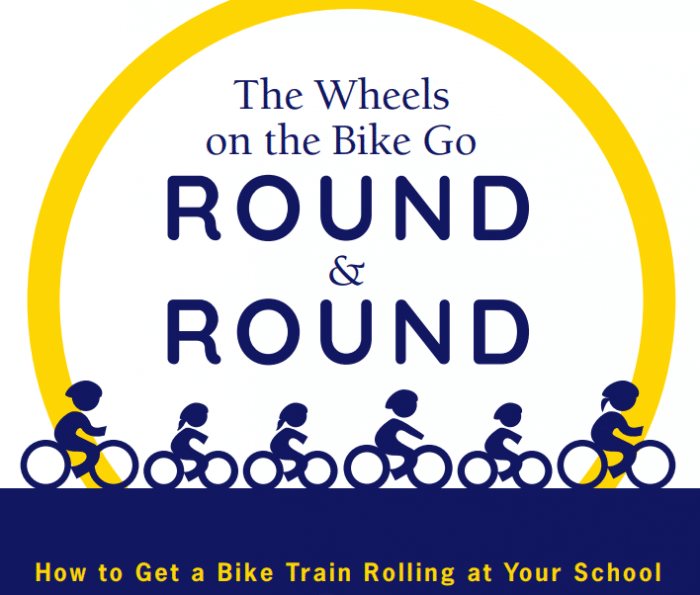Why Start a Walking School Bus
Many schools have found that Walking School Buses can be a fun, low cost mode of school transportation. During these uncertain times, the COVID-19 pandemic has made it more difficult for schools and districts to transport the same number of students on school buses while following social distancing guidelines. This may be the perfect time to start a Walking School Bus to help fill the transportation gap caused by COVID-19 .
Students who walk or bike to school not only get the daily physical activity they need to be healthy, but studies also show that children who walk or bike also tend to perform better in school.
What is a Walking School Bus
A Walking School Bus is a group of children walking to school with one or more adults. It sounds simple because it is! However, there are some modifications that need to be put in place due to COVID-19 social distancing requirements. Typically Walking School Buses range in size from just a few kids to a dozen, with an appropriate number of adults to provide supervision. Due to COVID-19, walking school buses should consist of no more than 6 children and one adult. They can be structured like a regular bus by creating one or more meeting points, a timetable, and a regular schedule of volunteers.
Start Simple
Walking School Bus programs should start simple and can always change or grow as needs arise. Start with a single neighborhood that has parents and children who are interested and live nearby. It is like a carpool, without the car! Added benefits include exercise, fresh air, and being with friends.
Are you home due to COVID-19?
Consider walking your child and including a few other children from your neighborhood.
For an informal bus:
1) Locate and invite nearby children to walk with you.
2) Pick a route and take a test walk before school starts.
3) Decide in advance how often you will walk together and what the return trip for each student will be.
4) Have fun!
Note: Many of the resources and materials provided on this page were created prior to COVID-19. Please consult and abide by local health regulations while planning your walking school bus or bike train program. The information provided above is courtesy of the Redwood Community Action Agency.
Walking school buses (WSB) or bike trains (BT) are healthy, cost-effective additions to a school transportation system where children walk or bike to school together each morning with trained adult volunteers. A WSB or BT ensures that students start each day with safe, supervised physical activity. These programs exist across the country and have been documented to improve students’ behavior, physical health, and ability to learn all while fostering community. Walking school buses and bike trains can also help with school transportation by minimizing the number of students that require bus service and reducing traffic congestion caused by personal vehicles.
For more information, please contact Safety Education Manager, Erik daSilva. The BCM has a huge toolkit of ready-to-use posters, forms, and handouts that we look forward to sharing!
Start a Walking School Bus
Prepared by the Safe Routes to School National Partnership and funded by the CDC, this toolkit provides educators, parents, and community members with everything they need to plan and organize a walking school bus led by adult volunteers. This step-by-step guide outlines how to plan and implement a walking school bus for your school, and includes proven tools, tips, and resources for an easy start. Whether or not you are familiar with the Safe Routes to School and Walking School Bus Programs, this guide will get you moving in the right direction.
Start a Bike Train
This toolkit prepared by the Safe Routes to School National Partnership and funded by the CDC, provides educators, parents, and community members with everything they need to plan and organize a bike train. Additionally, this guide provides a simple description of how to plan and organize a bike train. It outlines initial planning considerations, logistics, promotion, training, and evaluation. The guide has tried-and-true methods, resources, and templates for an easy start that will get you on your way—pedaling toward a successful bike train program!
Getting Started During COVID-19

Strategies:
1. Emphasize WSB and BT programs as viable alternatives to bussing or driving.
2. Tailor WSB and BT programs to abide by local health regulations. For example, maintain a safe number of participants and safe distance between them.
3. Have face coverings and hand sanitizer available for participants.
4. Promote WSB and BT programs as beneficial physical activity for caregivers and volunteers while gyms remain closed or restricted.
5. Set up remote drop-off locations for students who live too far to walk the entire way, but wish to walk or bike part of the way. This also helps alleviate traffic congestion at the school.
6. Promote routes to schools that utilize streets that are closed or have reduced speeds as a result of COVID-19.
7. Work with local businesses or community members to set up WSB and BT program leads and drop-off locations.
Considerations:
1. Walking school buses are included as a transportation strategy for schools that reopen during the COVID-19 pandemic in guidance from the Harvard School of Public Health.
2. Schools are overwhelmed planning for the school year during COVID-19. Staff and volunteers may not have the capacity to support a WSB or BT program due to minimized resources and concerns about personal health.
3. Many school districts have regulations about volunteers. Volunteers that have previously worked in the school district may have concerns about engagement with students during COVID-19.
4. Consider safe ways to incentivize participation in a WSB or BT program. Work with educators or local businesses to get students or volunteers excited about being involved.
5. If a WSB or BT program isn’t possible at this time, consider offering “Safe Routes for All” recommendations that call out routes that are best for students and caregivers to use when walking and biking to school independently.
For more information, please contact Safety Education Manager, Erik daSilva. The BCM has a huge toolkit of ready-to-use posters, forms, and handouts that we look forward to sharing!


